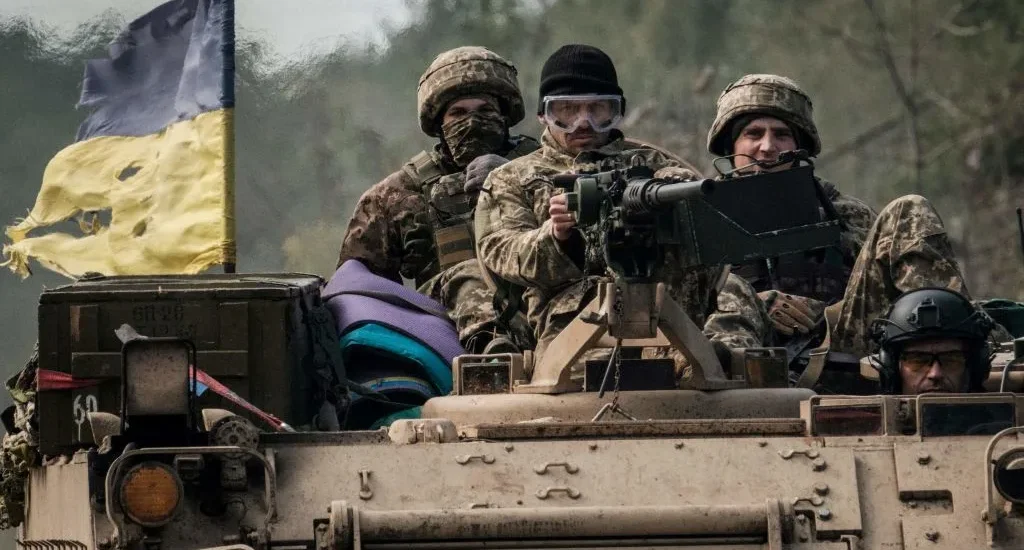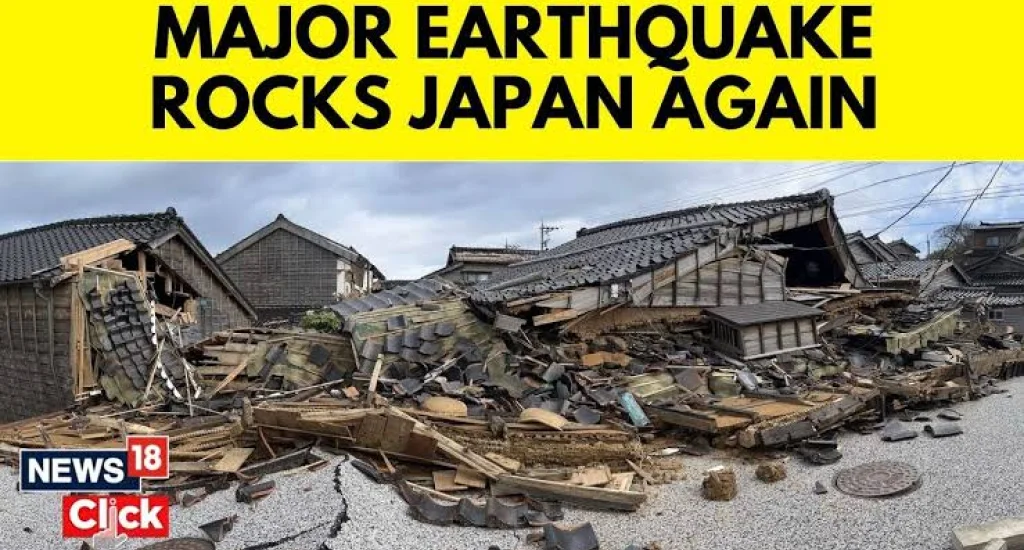
Angelina Jolie's Ukraine Visit Ends in Checkpoint Drama as Driver Gets Drafted Into Army
Hollywood star's humanitarian mission takes unexpected turn when military recruiters seize her driver at roadblock, exposing Ukraine's controversial mobilization crisis as war grinds into fourth year
The checkpoint appeared routine at first — just another security stop on the road to Kherson, where Russian drones patrol the skies and artillery fire punctuates the silence. But when Angelina Jolie's motorcade pulled over on November 5, Ukrainian military draft officers transformed a Hollywood humanitarian visit into a scene that captured everything uncomfortable about Ukraine's desperate struggle to fill its depleted ranks.
Her driver, a 32-year-old Ukrainian reserve officer identified only as "Citizen P," couldn't produce valid mobilization deferment papers. Within minutes, he was detained and handed over to the local Territorial Recruitment Center. Video footage circulating on Telegram appears to show Jolie herself arriving at the draft office, presumably trying to secure his release.
She failed. By the next day, Ukrainian military sources confirmed the driver was undergoing processing for military service. The Hollywood star continued her visit without him.
The incident — equal parts absurd and tragic — has ignited fierce debate in Ukraine and abroad about the country's increasingly aggressive conscription tactics, the desperation driving them, and what it means when even a UNICEF Goodwill Ambassador can't prevent someone in her entourage from being press-ganged into military service at a roadside checkpoint.
The Unannounced Visit That Became International News
According to Ukrainian media outlet Politico, Jolie had not informed the Ukrainian government of her intention to visit. She reportedly arrived "on foot" in the Kherson region, visiting medical facilities, children's hospitals, and maternity wards as part of her ongoing humanitarian work with the Legacy of War Foundation.
Photographs show her wearing a bulletproof vest bearing the foundation's patch, playing with children in areas regularly attacked by Russian forces with drones and missiles. It was her second trip to Ukraine since the full-scale invasion began in February 2022 — a visit meant to spotlight the plight of children living under constant bombardment.
Instead, the story became about what happened at that checkpoint in Mykolaiv region.
"During the inspection, it was revealed that the citizen is a reserve officer and has no confirmed grounds for deferral from mobilization," Ukrainian Ground Forces initially stated, before deleting the announcement and issuing a cryptic follow-up: "The information being spread in the media is distorted. An investigation is currently underway and all the circumstances are being clarified."
The contradictory statements only fueled speculation. Had Jolie attempted to intervene? Multiple reports claimed she contacted President Volodymyr Zelenskyy's office directly, though Ukrainian officials denied this. One report suggested she simply asked to use the restroom at the recruitment center — a claim so absurd it seemed designed to deflect attention from the diplomatic embarrassment.
According to news agency UNIAN, which quoted anonymous sources, "Neither she nor her representatives influenced the work of the draft office staff." The driver, the outlet noted, was born in 1992, making him 32 or 33 years old — squarely within Ukraine's mobilization age range of 25 to 60.
Ukraine's Mobilization Machine: Desperation Meets Controversy
To understand why Ukrainian military recruiters would seize Angelina Jolie's driver at a checkpoint — creating an international incident in the process — you need to understand the mathematics of attrition that define this war.
Russian forces significantly outnumber Ukrainian units in key sectors of the front, particularly in the east where Moscow has been advancing at record rates despite absorbing catastrophic losses. The battle for Pokrovsk has become emblematic of Ukraine's manpower crisis: outnumbered defenders fighting a slow retreat against an enemy willing to sacrifice thousands of soldiers for incremental gains.
Ukrainian Head of Military Intelligence General Kyrylo Budanov admitted in May 2025 that he had exhausted all available reserve units. The Center for European Policy Analysis estimates Ukraine needs an additional 400,000 to 500,000 soldiers to resist Russian offensives effectively. By October 2024, Ukrainian National Security and Defense Council Secretary Oleksandr Lytvynenko reported that 1,000,050 Ukrainians had been conscripted since February 2022, with another 160,000 in the mobilization pipeline.
Those numbers sound impressive until you realize they're barely keeping pace with casualties, desertions, and combat exhaustion. Between 600,000 and 800,000 Ukrainians volunteered for military service during the same period — but the volunteer pipeline has slowed to a trickle while the front lines demand constant reinforcement.
Enter the Territorial Recruitment Centers, or TCCs — Ukraine's military draft apparatus, tasked with the impossible job of finding able-bodied men in a country where millions have fled abroad and millions more are hiding to avoid conscription.
The Viral Videos Ukraine Can't Ignore
Search social media for "Ukraine TCC" and you'll find dozens of viral videos showing men being dragged — sometimes literally — into vans by military recruiters. The videos are disturbing: physical altercations between officers and civilians, men trying to escape, bystanders shouting insults at recruitment teams doing their jobs.
Ukrainians have coined a term for this: "busification," referring to the minibuses into which draft-age men are pulled from streets, workplaces, and public transportation. Social media groups containing tens of thousands of members now exist solely to alert men about TCC movements so they can avoid confrontation. According to a military commander interviewed in November, 90% of troops at the front are "forcibly mobilized villagers."
The Ukrainian Ground Forces have claimed some videos are Russian psychological operations designed to undermine morale and trust in recruitment officers. They're probably right — but that doesn't change the reality that aggressive conscription tactics have created a genuine crisis of public trust.
Only 29% of Ukrainians surveyed in July 2025 considered it shameful to be a draft dodger. Ukrainian mobilization authorities have launched investigations against 500,000 men for draft evasion. The pattern is unmistakable: while most Ukrainians support continuing the war in principle, far fewer are willing to risk their own lives to fight it.
"Those who make it to the front line are usually too poor or too unfortunate to have been caught by draft officers."
The Class Divide Ukraine Doesn't Want to Discuss
Here's what makes the Angelina Jolie incident particularly uncomfortable for Ukrainian authorities: it exposed, however briefly, the class dynamics that define modern Ukrainian conscription.
The driver seized at that checkpoint was working for one of the world's most famous actresses on a humanitarian mission. He presumably had connections, resources, access to people who might help him secure proper deferment paperwork. And yet he was still drafted.
Now imagine the fate of men without those advantages.
Throughout 2024 and 2025, Ukrainian media regularly reported officials accepting massive bribes to exempt men from military service. In one October case, a top medical official who served on the local council amassed $6 million taking bribes to facilitate draft-dodging through disability certificates. When police raided his home, they found family members photographing themselves on beds piled with cash.
Less than two weeks later, journalists discovered that nearly all prosecutors in that same region were registered as "disabled" — a statistical impossibility that spoke volumes about corruption in the mobilization system.
The wealthy hire fixers, pay bribes, or flee the country. Middle-class men with professional jobs often secure legitimate deferments through employer sponsorships. The poor and unlucky end up at checkpoints where TCC officers check their papers and find them wanting.
As one front-line soldier put it, there are now four mobilized soldiers for every volunteer — a complete reversal from the early months of the war when patriotic fervor drove hundreds of thousands to enlist willingly.
The Laws That Made This Possible
Ukraine's current mobilization system stems from legislation passed in April 2024 after months of contentious debate. The new laws lowered the conscription age from 27 to 25, introduced electronic draft notices, imposed penalties on draft dodgers, and required Ukrainian men abroad to register with conscription authorities to maintain consular services.
The legislation was deeply unpopular. Lawmakers removed a provision that would have allowed soldiers who served 36 months in combat to demobilize — a decision that enraged military families who watched exhausted troops denied relief while the government hunted for fresh conscripts.
Under current law, Ukrainian men aged 18 to 60 cannot leave the country during martial law, though only those 25 and older face mandatory conscription. Reserve officers like Jolie's driver can be called up for "military retraining" — a deliberately vague term that essentially means they're going to the front.
The Mykolaiv regional recruitment office confirmed the driver's mobilization, noting he was a reserve officer without valid deferment. According to the military medical commission, he was fit for service. His fate was sealed the moment TCC officers checked his papers at that checkpoint.
What Happens Next
By Ukrainian law, "Citizen P" should now undergo two to three months of basic training before deployment. In practice, training standards have been inconsistent — some conscripts report receiving only 20 days of instruction before being sent to combat zones. The quality of "busified" troops has become a recurring complaint among army officers dealing with poorly trained, low-morale conscripts who never wanted to be soldiers.
Will Angelina Jolie's driver actually end up on the front lines? Probably. Ukraine's need for troops is too acute to waste personnel on garrison duty. Unless someone intervenes at a high level — and Ukrainian officials insist that won't happen — he'll join the hundreds of thousands of mobilized men already fighting in the east.
The Diplomatic Fallout: When Humanitarian Work Meets Hard Reality
For Ukraine, the optics are terrible. Here's a globally recognized humanitarian advocate visiting war-torn regions to spotlight civilian suffering, and Ukrainian authorities seize someone from her entourage at a checkpoint. The international headlines practically write themselves: "Angelina Jolie's Driver Drafted During Ukraine Visit," "Hollywood Star Can't Save Driver From Military Draft."
Ukrainian officials have tried to minimize the incident, insisting Jolie's visit continued normally and that she didn't attempt to influence the recruitment process. The deleted statements and contradictory explanations suggest otherwise — this clearly caught someone off guard, and the scramble to manage the narrative exposed internal confusion about how to handle the situation.
From a strictly legal perspective, Ukrainian authorities did nothing wrong. The driver was a reserve officer without proper deferment documentation, making him subject to mobilization under wartime law. TCC officers were simply doing their jobs, enforcing regulations that apply to all Ukrainian men within the conscription age range.
But law and optics don't always align. Detaining someone working for a UNICEF Goodwill Ambassador during a humanitarian visit sends an unmistakable message: Ukraine's mobilization system is so desperate, so aggressive, that even proximity to international celebrities offers no protection.
"The information being spread in the media is distorted. An investigation is currently underway and all the circumstances are being clarified."
What This Reveals About the War's Fourth Year
The seizure of Angelina Jolie's driver isn't just an isolated incident or bureaucratic mishap. It's a window into the brutal arithmetic defining Ukraine's war effort as it enters its fourth year.
Ukraine is running out of men willing to fight voluntarily. The early wave of patriotic volunteers has been absorbed into the military or exhausted by prolonged combat. The pool of men actively avoiding conscription numbers in the hundreds of thousands, if not millions. Meanwhile, Russian forces continue grinding forward in the Donbas, accepting catastrophic casualties in exchange for territorial gains that Ukraine struggles to reverse.
The desperation is palpable at every level. Western allies pressure Kyiv to lower the conscription age to 18. Ukrainian officials resist, arguing this would sacrifice the nation's future. Recruitment officers scour cities and countryside for eligible men. Draft dodgers hide, bribe officials, or flee abroad. The entire system operates under enormous strain, held together by martial law and the existential threat of Russian conquest.
And at the front, soldiers like the ones defending Pokrovsk face overwhelming odds with inadequate reinforcements, exhausted units, and the knowledge that replacements are being dragged unwillingly into service rather than volunteering from conviction.
This is not the Ukraine of February 2022, when millions rallied to defend their homeland against invasion. This is the Ukraine of November 2025: weary, divided, struggling to maintain cohesion while pursuing a war many citizens support in theory but refuse to fight personally.
The Human Element: A Driver Becomes a Symbol
Lost in the geopolitical analysis and debates about mobilization policy is a simple human story: a man was working as a driver on a humanitarian mission and got drafted at a checkpoint. His name remains undisclosed. His thoughts about this sudden transformation from civilian employee to combat soldier remain unknown. Whether he has family, whether they're protesting his mobilization, whether he'll survive his military service — all of this exists beyond the headlines.
He joins the ranks of hundreds of thousands of Ukrainian men conscripted against their will, sent to fight a war they didn't necessarily volunteer for, defending a country that desperately needs their service but offers little choice in providing it.
Some will call him a draft dodger who should have registered properly. Others will see him as another victim of aggressive conscription tactics that prioritize military necessity over individual rights. Both perspectives contain truth.
What's undeniable is that his sudden mobilization exposed fault lines in Ukrainian society that government officials would prefer remained hidden: the class divide in who actually fights this war, the desperation driving aggressive conscription, the erosion of public willingness to serve, and the uncomfortable reality that Ukraine is struggling not just to hold territory but to maintain the popular mobilization that defined the war's early months.
Jolie's Silence and What It Means
As of this writing, Angelina Jolie has not publicly commented on the incident. She has not posted about her Ukraine visit on social media. Her representatives have not issued statements to international media. This silence is notable — and understandable.
What could she say? Criticizing Ukrainian conscription practices would undermine the humanitarian mission she came to support. Defending the military's actions would ring hollow after video showed her at a draft office presumably trying to help her detained driver. Ignoring the incident entirely risks appearing callous toward someone working in her service.
So she continues her work quietly, visiting children in war-torn regions, drawing attention to civilian suffering, and leaving the controversy behind at that checkpoint in Mykolaiv.
The driver, meanwhile, prepares for military service. The TCC officers move on to their next checkpoint. The war grinds forward, consuming lives and resources with mechanical indifference to celebrity visits and diplomatic embarrassment.
The Broader Question No One Wants to Answer
The Angelina Jolie incident forces an uncomfortable question that extends far beyond one driver's fate: How long can Ukraine sustain a war when growing numbers of its citizens are unwilling to fight voluntarily?
Aggressive conscription can fill immediate manpower needs, but it creates soldiers with low morale, minimal motivation, and questionable combat effectiveness. The Council of Europe's Commissioner for Human Rights published a report in July 2025 acknowledging "systemic and documented human rights violations" in Ukraine's mobilization system.
Western military aid can provide weapons and ammunition, but it cannot manufacture the will to use them. Training programs can teach tactics and skills, but they cannot instill the conviction that made early Ukrainian resistance so effective.
As martial law and mobilization were extended yet again in November 2025 — now running through February 2026 — the question becomes not whether Ukraine can legally conscript enough soldiers, but whether an increasingly unwilling population will tolerate indefinite compulsory military service in a war with no clear end.
Ukrainian officials know this. Russian commanders know this. Western allies know this. It's why pressure has mounted to lower the conscription age, why corruption in the mobilization system has become so widespread, why videos of forced conscription provoke such visceral reactions.
The arithmetic is simple and brutal: Ukraine needs hundreds of thousands more soldiers. Volunteers aren't materializing in sufficient numbers. Aggressive conscription is filling the gap but corroding public support. Something has to give.
A Checkpoint, A Driver, A War
On the surface, this is a story about a Hollywood celebrity's humanitarian visit intersecting with Ukraine's military bureaucracy in an awkward moment. Dig deeper, and it becomes a story about everything difficult and uncomfortable in Ukraine's war effort as it enters its fourth year.
The driver seized at that checkpoint represents thousands like him: men who didn't volunteer, who likely didn't want to serve, but who now face conscription because Ukraine's survival demands it. The TCC officers doing the seizing represent a system operating under impossible pressure, tasked with filling an endless appetite for troops while the country grows weary of war.
Angelina Jolie's presence added celebrity spectacle to a process that usually occurs away from cameras — but the process itself is nothing new. It happens at checkpoints across Ukraine every day, grinding forward with bureaucratic efficiency regardless of who's watching.
The investigation Ukrainian officials promised will likely conclude that procedures were followed, laws were obeyed, and the driver's mobilization was legally sound. This will be technically correct and fundamentally unsatisfying.
Because the real story isn't about paperwork and regulations. It's about a country fighting for survival while struggling to maintain the popular mobilization necessary to sustain that fight. It's about the gulf between supporting a war in principle and being willing to fight it personally. It's about class divides, corruption, exhaustion, and the mathematics of attrition consuming a nation.
And it's about a driver who went to work one morning escorting a humanitarian mission and ended the day processed for military service, his fate sealed by missing documents and bad luck at a checkpoint where the war's cold arithmetic overrode everything else.
His story is Ukraine's story in November 2025: necessary, controversial, and deeply uncomfortable for everyone involved. The cameras captured one moment. The war continues regardless.
Related Articles




